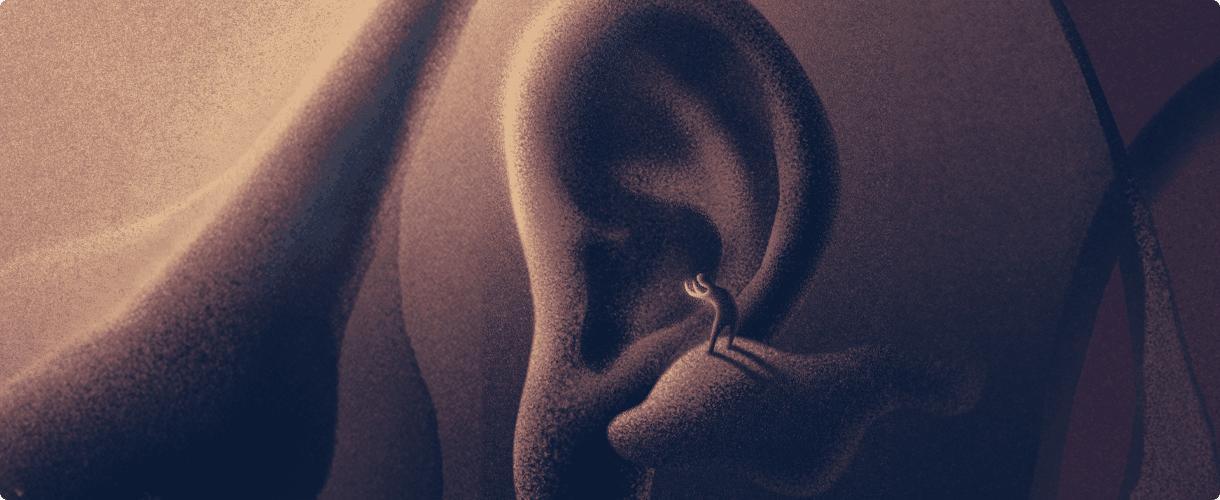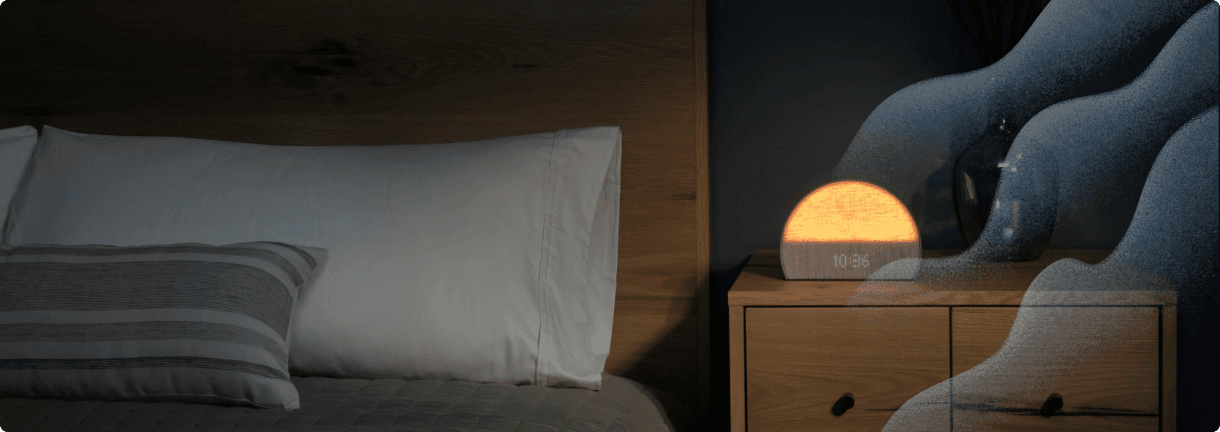Go Beyond White Noise: The Science Behind How To Choose the Best Sleep Sound for You
You may not think of noise when you picture winding down at night or staying on task during the day. While it’s true that some ambient sounds can interfere with your daily routines, other sounds can actually play a role in helping you accomplish your goals.
Think about the way the rush of a waterfall or the steady whoosh of an air conditioning unit makes you feel. Certain sound characteristics can affect you physiologically and mentally, whether your goal is to relax or to focus.
While white noise is a common recommendation, there are many options beyond it. Like light, sound comes in a variety of “colors,” and learning about each part of the spectrum can help you pinpoint sounds that add value to your day-to-day life. Read on to learn more about the science behind the rainbow of sleep sound colors, and how you can use them in your daily (and nightly) routines.
What are sleep noises, anyway?
Sound frequency — scientifically, the number of times per second a sound wave repeats itself — is measured in hertz (Hz). Low frequencies are typically deeper sounds, while higher frequency sounds are higher-pitched. For example, thunder, thumping bass, or heavy rain outside your window are low frequency. Chirping birds, crying babies, and sirens are all high-frequency. Some sounds, like music or conversation, include lots of different frequencies.
According to Carson Graham, audio engineer at Hatch, the human ear can hear between 20 and 20,000 Hz (which decreases as you age). “Noise” — yes, that’s a real scientific term referring to engineered sound — plays all frequencies of sound the human ear can hear at the same time, but at different amplitudes. Measured in decibels, amplitude refers to sound intensity, which we perceive as volume.
A tip from Hatch: You can set a custom “cue to rest” on your Restore. Every night, you’ll get a gentle reminder with sounds and lights that it’s time to unwind

As with light wavelengths, scientists use colors to label noise. With the advent of sound machines and apps, many of them focused on sleep, noise has also become a tool you can use to enhance your routines.
Noise can be especially useful for masking outside sounds, says sound designer Dallas Taylor, host of 20,000 Hz, a podcast focused on interesting sounds. As with ambient noise in your environment, different colors of noise can affect you in different ways. Certain ones may be energizing or even agitating, while others can feel cozy and relaxing.
White noise
Just as the color white encompasses the entire light spectrum , white noise includes all the sound frequencies humans can hear — and all at the same amplitude (or volume). In that way, white noise is like static, providing a steady background lull that can effectively drown out other sounds.
Because it contains all frequencies at the same volume, white noise may be a good choice if you’re trying to cover up different kinds of ambient noise — high-frequency ones like traffic or a crying baby upstairs, and low-frequency ones like thumping footsteps. It may also help promote sleep. One small study found people with insomnia fell asleep 38% faster when listening to white noise versus no noise at all. White noise has also been shown in studies to help people with tinnitus, or chronic ringing in the ears.

Pink noise
While white noise plays all frequencies at the same amplitude, pink noise emphasizes lower frequencies more. “As the pitch of the frequency goes up, the volume goes down, like a ramp,” says Graham. Pink noise can cover up disruptive background noise, but it may do a better job of masking low-frequency noises than, say, high-pitched honking outside your window.
Noise that emphasizes low frequencies is also inherently relaxing to some people. That’s because lower frequencies sound less harsh than white noise — think of a babbling brook or streaming waterfall rather than TV static. For that reason, pink noise may be a good pick for relaxing anytime during the day, getting ready for bed, or sleeping. A small study found pink noise can reduce sleep latency, which means it may help people fall asleep faster.

A tip from Hatch: The Hatch Restore has a variety of warm, calming sounds for nighttime. Set up a nightly cue with Hatch+ that uses light and sound to remind you to start your Unwind routine. There is also a new category of Unwind audio, Pillow Talk, designed to make that ready-for-bed time just a bit more entertaining.
Brown noise
Brown noise is a step down the frequency spectrum. It’s like pink noise but with even more low-frequency sounds. “These are more emphasized in brown noise, and the higher frequencies are even less emphasized,” says Graham.
The result is a deeper, more subdued sound, compared to white noise and other high-frequency options especially. Both Taylor and Graham prefer brown noise in the background for sleep because it feels more relaxing. That said: It may not be so great at concealing screeching tires or yelling voices. “With brown noise, higher-pitched sounds may peek in through your window a bit more,” says Graham.

Blue noise
On the other end of the spectrum are violet and blue noise. In blue noise, higher frequencies are played at a slightly higher amplitude, which Graham says might sound even harsher than white noise. “People usually don’t use this sound to relax,” he says. Theoretically, if you don’t find it too grating, blue noise does a good job of covering up high-frequency noises.
Green noise
If you want to mentally transport yourself to a forest, try green noise. While green noise doesn’t have a set mathematical formula, Graham says it’s usually similar to white noise, but with mid-range frequencies emphasized. “People talk about green noise as the background noise of nature because it ends up sounding like a combination of wind, rain, and rustling leaves,” says Graham.

Violet noise
Violet noise plays high frequencies at a substantially higher amplitude than blue noise, so it’s even harsher, like a broken speaker or really loud TV static. Everyone’s different, but Graham says it’s common for people to find violet noise agitating. “Our ears hear high frequencies with greater sensitivity,” he says.
From an evolutionary perspective, this trait is what keeps us alert to danger, whether a screeching animal or a crying baby. In your home or workplace, though, violet might be too agitating to use (unless your goal is to drown out extremely high-frequency sounds).

How to choose a sleep sound that works for you
There might be lots of math involved in designing sleep sounds, and certain properties can be conducive to various activities. But ultimately, finding the sleep sound you’ll benefit from most is a more subjective process. “Think about what’s in your environment, and what you want to mask, and align it with your own hearing,” suggests Taylor.
Play around with different noises to figure out which one suits your routine. Pay attention to how certain sounds make you feel, both physically and mentally. Noises might affect you uniquely at different points in the day. For example, you may find that white noise is more stimulating or effective at covering up distracting chatter when you’re trying to work, and that green noise reminds you of being out in nature, which helps you doze off at night.
Graham says the shape and size of a room can also impact how a sound makes you feel — as can the speaker you’re using — so you may notice yourself gravitating toward other colors in different spaces.
All that to say: While some noises do have inherent, scientific properties, how these characteristics make you feel varies, based on many different factors. So — much like the ins and outs of your bedtime routine — don’t be afraid to experiment until you find what works best for you.